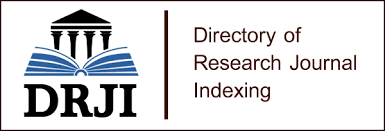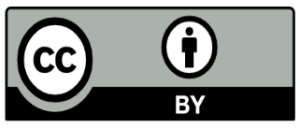SWOT AND AHP ANALYSIS IN DETERMINING THE STRATEGY OF PRODUCT MARKETING EXCELLENCE IN COMPANIES
Abstract
The development of companies in the digital era especially product business in Indonesia is now increasingly prominent in complexity, competition, change, and uncertainty so that the company's marketing and sales systems have not reached a maximal capacity due to the lack of superior and appropriate strategy. The researcher considered several alternatives using SWOT analysis and the Analytical Hierarchy Process (AHP) method to overcome these problems. The results showed that using the SWOT-AHP Analysis, it was found that the Strength parameter got the highest score by 53% and Opportunity parameter by 21%. Through the SWOT sub-criteria, it was found that the Strenghts priority were S2 (Registered patent) with a score of 0.53, S1 (New product) with a score of 0.29, S3 (Mechanical technology) with a score of 0.28, respectively. While weaknesses priority were W2 (in optimal product promotion) with a score of 0.63, W1 (product not widely known) with a score of 0.37. In addition, the Opportunities Priority were the order of O2 (market share's openness) with a score of 0.52, O3 (More efficient products) with a score of 0.29, and O1 (Switching products from manual to automatic) with a score 0.19. And finally, the Threats priority were T1 (raw material) with a score of 0.53, T2 (price competition) with a score of 0.26 and T3 (product fraud) with a score of 0.21. The top priority of leading marketing strategy are by increasing product quality by 39.3%, while the second priority is marketing cooperation by 21.4%, the third is the pricing strategy by 20.5% and the last is promotion by 14.8%.
References
Agarwal, R. (2013). Critical Path Method in Designing Feasible Solutions. International Journal of Scientific Research and Reviews , 190-202.
Agyei, W. (2015). Project Planning And Scheduling Using PERT And CPM Techniques With Linear Programming: Case Study. INTERNATIONAL JOURNAL OF SCIENTIFIC & TECHNOLOGY RESEARCH , 222-227.
Alecu, F. (2014). Cost Control and Performance Review of Software Projects by Using the Earned Value Management. Oeconomics of Knowledge , 2-6.
Andawei, M.-E. M. (2014). Extension of Time Determination in Construction Projects in Nigeria: The Critical Path Method. The International Journal Of Engineering And Science (IJES) , 48-51.
Arica Dwi Susanto, A. A. (2018). The Optimization of Multipurpose Building Development on Project Scheduling Using Precedence Diagram Method (PDM). ASRO JOURNAL-STTAL, 9 (1), 1-7.
Balla, G. T. (1995). Critical path analysis for the management of fractured neck of femur. AUSTRALIAN JOURNAL OF PUBLIC HEALTH , 155-159.
Czarnigowska, A. (2008). Earned value method as a tool for project control . Budownictwo i Architektura 3 , 15-32.
Daniel Castro-Lacouture, A. G.-J. (2009). Contruction Project Scheduling with Time, Cost and Material Restrictions Using Fuzzy Mathematical Models and Critical Path Method . JOURNAL OF CONSTRUCTION ENGINEERING AND MANAGEMENT , 1096-1104.
Dwaikat, L. N. (2016). Measuring the Actual Energy Cost Performance of Green Buildings: A Test of the Earned Value Management Approach. Energies journal , 1-20.
Fatemeh Nouban, N. G. (2017). The Factors Affecting The Methods of Construction Projects Scheduling: An State of The Art and Overview. Asian Journal of Natural & Applied Sciences, 6 (4), 114-122.
Ikhtisholiyah. (2017). analysis of the application of time and cost management on the construction project of electric engineering building of polytechnic industry of madura (poltera). Zeta-Math Journal , 14-21.
K.K.Khandelwal, D. B. (2002). PROJECT PLANNING AND CONTROL WITH PERT AND CPM. New Delhi: LAXMI PUBLICATIONS (P) LTD.
Kim, S.-G. (2012). CPM Schedule Summarizing Function of the Beeline Diagram Method. Journal of Asian Architecture and Building Engineering , 367-374.
M, S. (2015). Traditional Critical Path Method versus Critical Chain Project Management: A Comparative View. International Journal of Economics & Management Sciences , 1-6.
M. Hayuningtyas, T. D. (2018). System analysis for technology transfer readiness assessment of horticultural postharvest. International Conference on Industrial and System Engineering (IConISE) (hal. 1-7). Bogor: IOP Publishing.
Mazlum, M. (2015). CPM, PERT and Project Management With Fuzzy Logic Technique and Implementation On A Business. 4th International Conference on Leadership, Technology, Innovation and Business Management (hal. 348-357). Istanbul: Elsevier Ltd.
Muhammad Kholil, B. N. (2018). Scheduling of House Development Projects with CPM and PERT Method for Time Efficiency (Case Study: House Type 36). IOP Conf. Series: Earth and Environmental Science (hal. 1-8). jakarta: IOP Publishing.
Nafkha, R. (2016). THE CRITICAL PATH METHOD IN ESTIMATING PROJECT DURATION. Information Systems in Management , 78-87.
R.Lin, H. J. (2009). A fuzzy pert approach to evaluate plant construction project scheduling risk under uncertain resources capacity. Journal of Industrial Engineering and Management , 31-47.
Shailla. (2014). Comparative Study of Management Operation System Techniques (MOST) and CPM in Construction Scheduling. International Journal of Engineering Trends and Technology (IJETT) , 371-379.
Shan, Y. (2014). Integration of Building Information Modeling and Critical Path Method Schedules to Simulate the Impact of Temperature and Humidity at the Project Level. buildings jounal , 295-319.
Silvianita, R. F. (2018). Fast Missile Boat Project Planning using CPM and What If Analysis Method. IOP Conf. Series: Earth and Environmental Science (hal. 1-6). jakarta: IOP Publishing.
Wilson, B. (2013). Earned Value Management Systems: Challenges and Future Direction. Journal of Integrated Enterprise Systems , 9-17.
Wong, Y. (1964). Critical Path Analysis for New Product Planning. Journal of Marketing , 53-59.
Y. Arslan, H. B. (2017). Planning and Monitoring of industrial punch development processes . Journal of Engineering Research and Applied Science , 615-622.
Published
How to Cite
Issue
Section
License
Copyrights for articles published in Journal of Asian and African Social Science and Humanities are retained by the authors, with first publication rights granted to the journal. The journal/publisher is not responsible for subsequent uses of the work. It is the author's responsibility to bring an infringement action if so desired by the author.
Articles published in Journal of Asian and African Social Science and Humanities are published under the Creative Commons Attribution (CC-BY) license, which permits others to distribute, remix, tweak, and build upon your work as long as they credit you for the original creation.
Â














